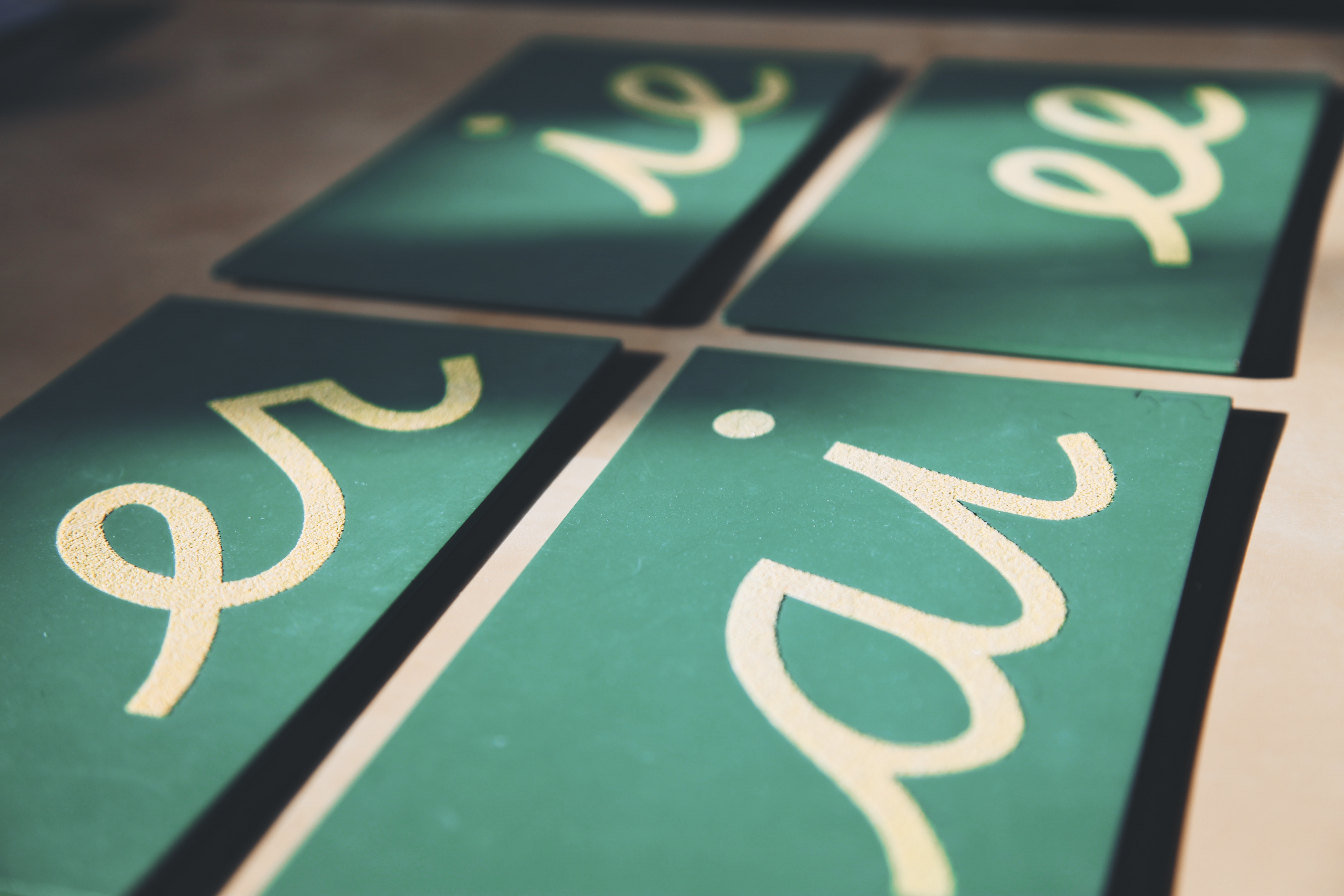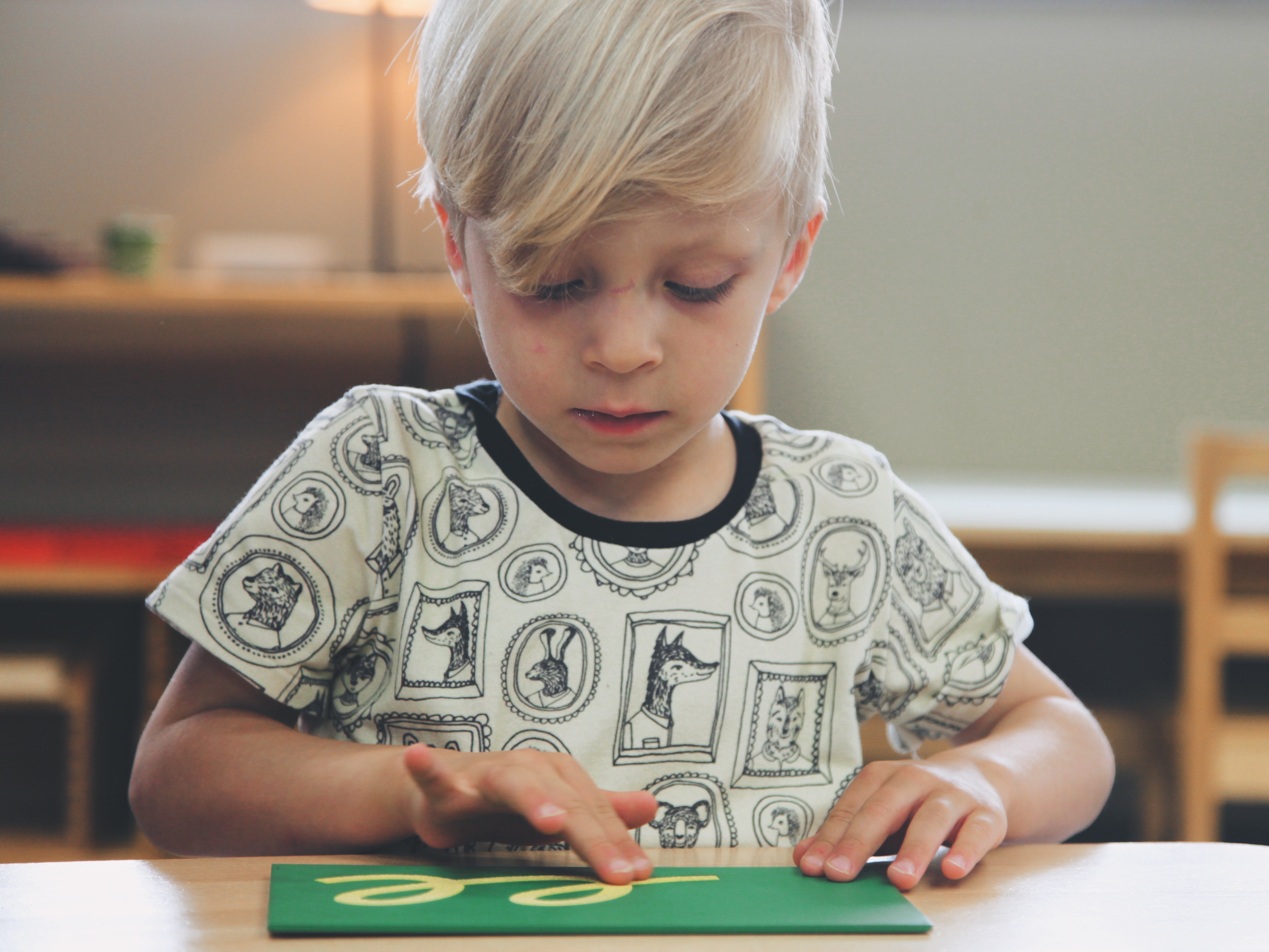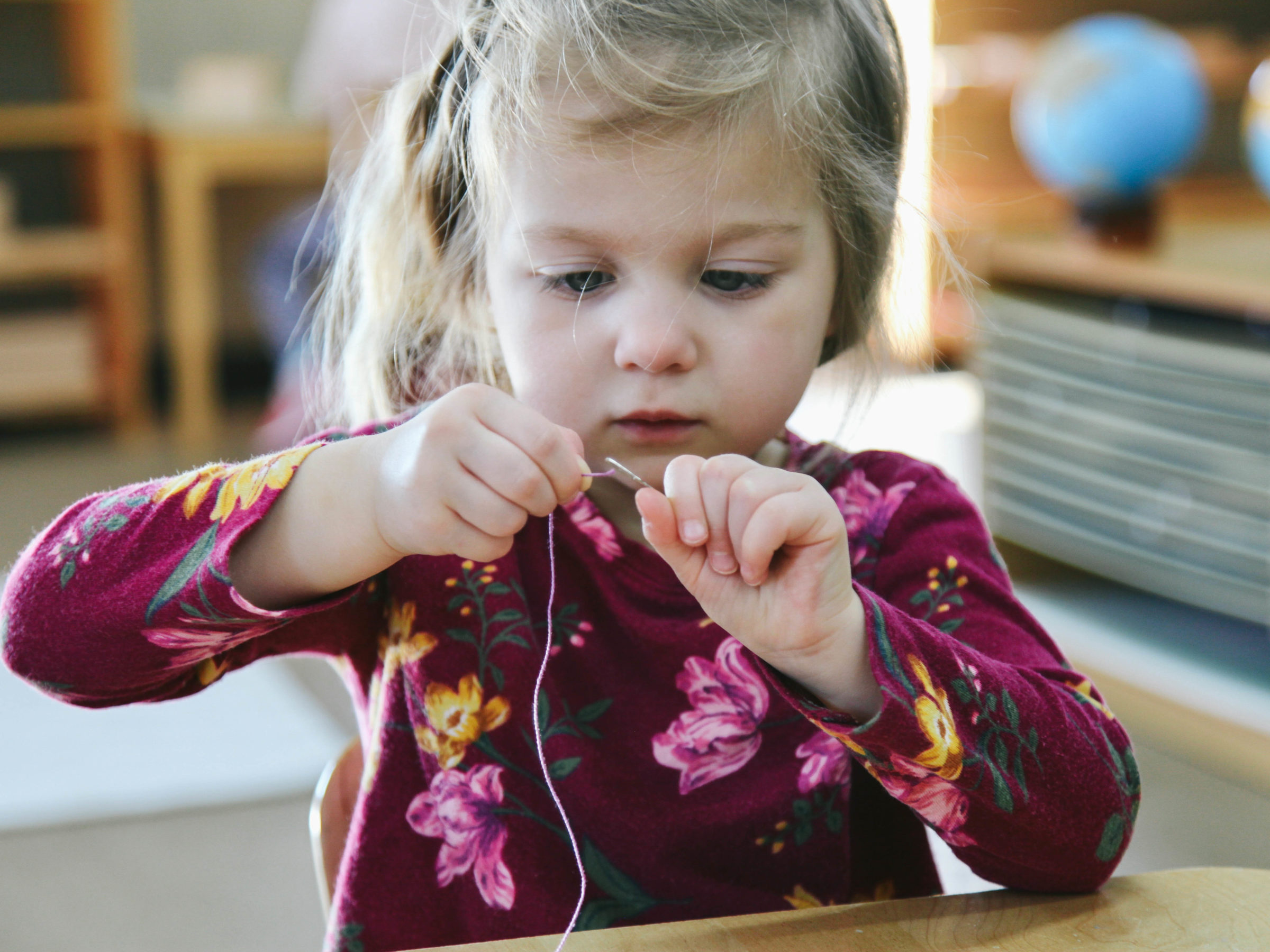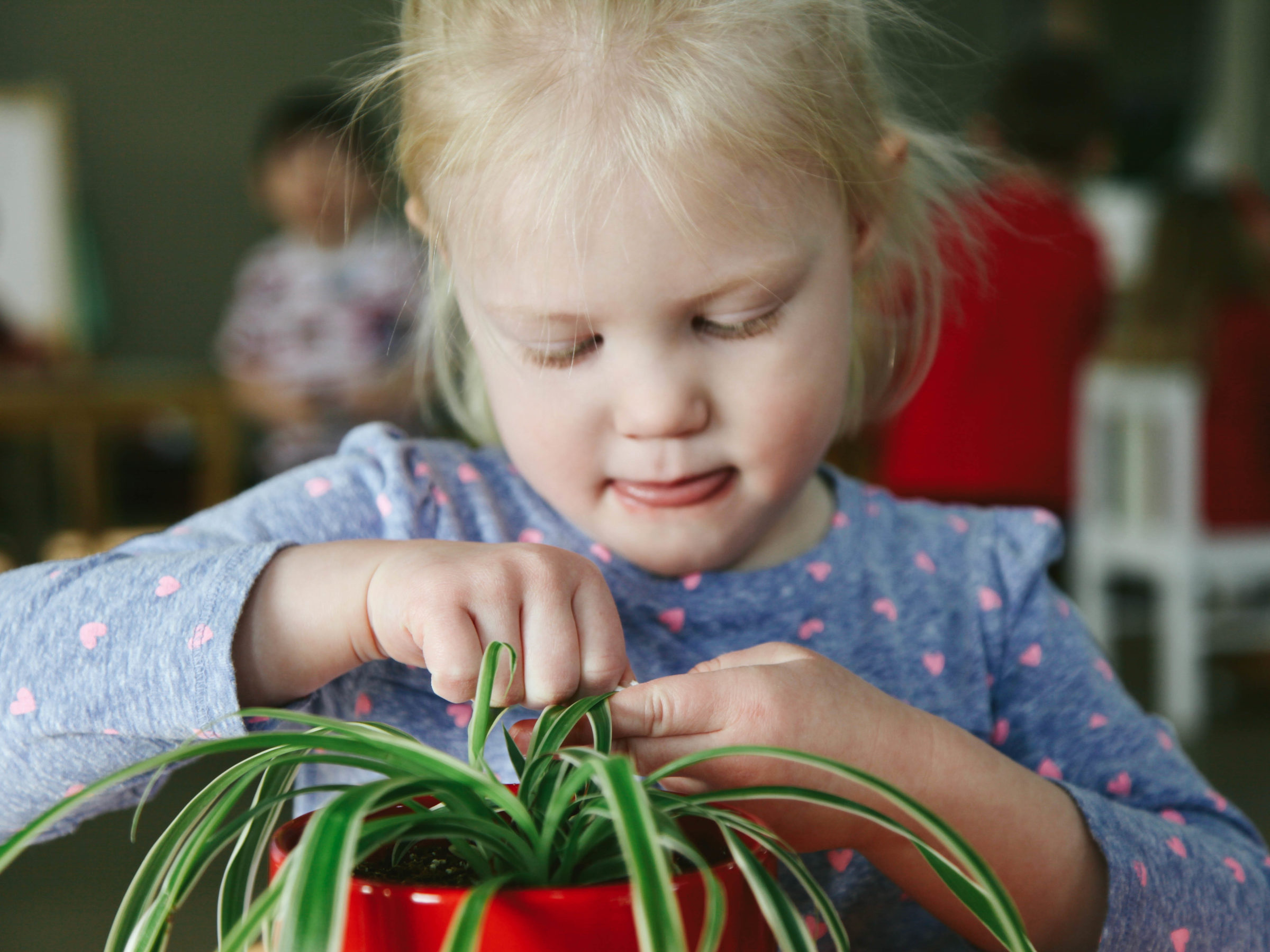Sandpaper Phonograms
Montessori Activities
How do you use this material?
The Sandpaper Phonograms are similar to the Sandpaper Letters — they are cursive letters in sandpaper on a colored board, each one represents a sound, and they are found in a box or sometimes displayed on small ledge in the classroom — with an important difference. While each Sandpaper Letter represents a single letter, the Sandpaper Phonograms are two letters that come together to produce a unique sound, such as the “ie” in pie.
They are necessary for English, since every letter does not always make the same sound, and there are certain sounds which we typically represent with a two-letter phonogram.
Another note, while we don’t always use the same letter combination to make a certain sound, the letter combination used on the Sandpaper Phonogram is the most frequent combination. For instance, “ie” in pie is the same in lie and die, but it sounds the same but is spelled differently in cry and sigh. There’s a material for this nuance, too!
We present this material the same way we present the Sandpaper Letters. The guide selects three Phonograms and brings them with the child to a table. We would already have had lots of practice with the Sandpaper Letters, as well as introducing writing with the Moveable Alphabet.
Again, we begin with a game. Let’s think of words with the sound “oy” in them. Boy, soy, ahoy… A child might come up with words that make this sound but use a different spelling, such as “oil.” This is a perfectly acceptable answer, since the child would not yet know that there are spelling differences.
Then, we’ll show the Phonogram. This is “oy.” We’ll trace the shape, using the index and middle finger of the dominant hand, and say the sound of the phonogram at the end.
The other two phonograms are introduced the same way. We review the phonograms in a game called a Three Period Lesson, where we say, “Touch ‘oy.’ Trace ‘sh.’ Give me ‘ee.’” We play this game a few times through, before asking a child, “What’s this?” If the child is able to correctly identify the phonograms, we might introduce three more, or we might encourage the child to trace the phonograms independently, or to work with the Moveable Alphabet to enforce this new knowledge.
If a child can’t correctly identify these new phonograms, that’s just fine! We might continue playing the Three Period Lesson, or we might put the phonograms away and try again a different day.
What is a child learning?
Since this child has already been introduced to Sandpaper Letters and the beginnings of literacy, they might have noticed that they can’t always find just the right letter to match with a sound, and we might have seen some creative spelling in order to try and create a sound.
A child is learning the beginnings of spelling in English, including one of the most common ways to create a certain sound.
What does a child not know they’re learning?
A child is learning to be comfortable with the often unpredictable spellings in the English language. The same sound can be created by many different letter combinations, such as I, kite, try, high, buy, and lie, and different sounds can be created through using the same letter combinations, such as pie and believe. This is the start of a positive relationship with literacy — comfort with making mistakes, understanding the importance of fixing them, and playing with language in poetry and artistic writing.
Written by:
Charlotte Snyder





